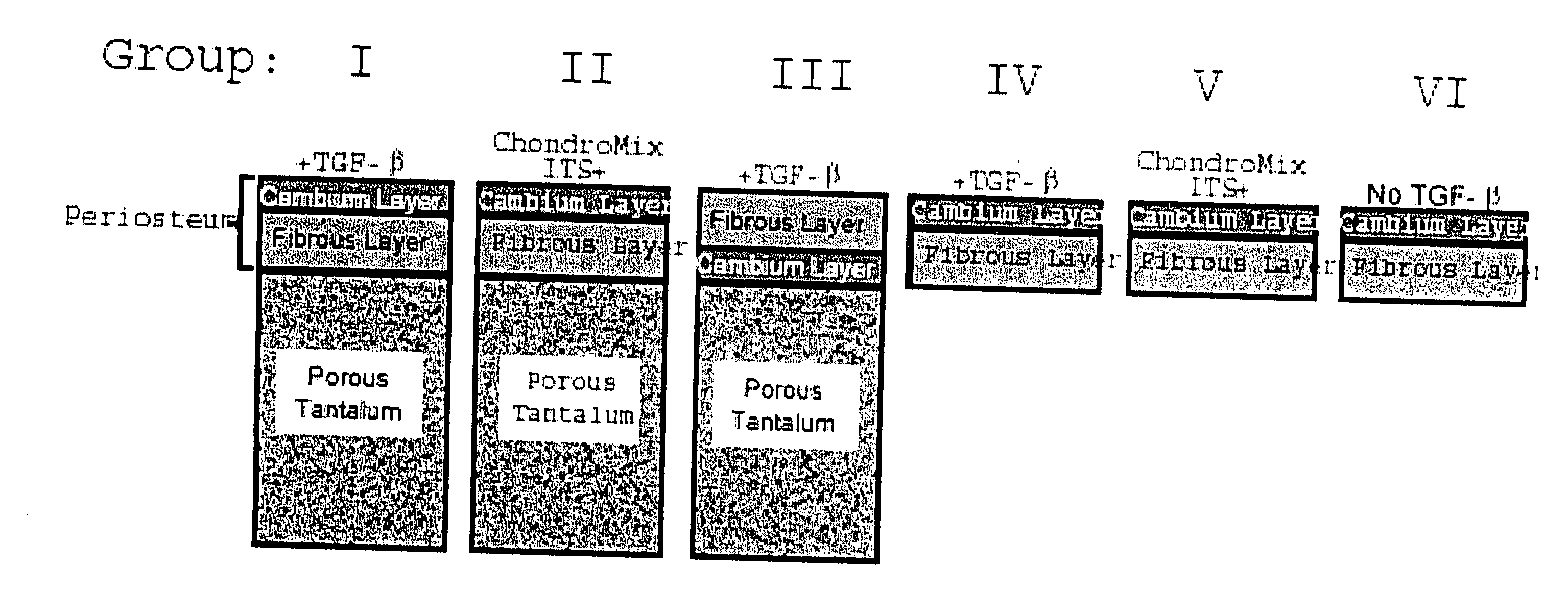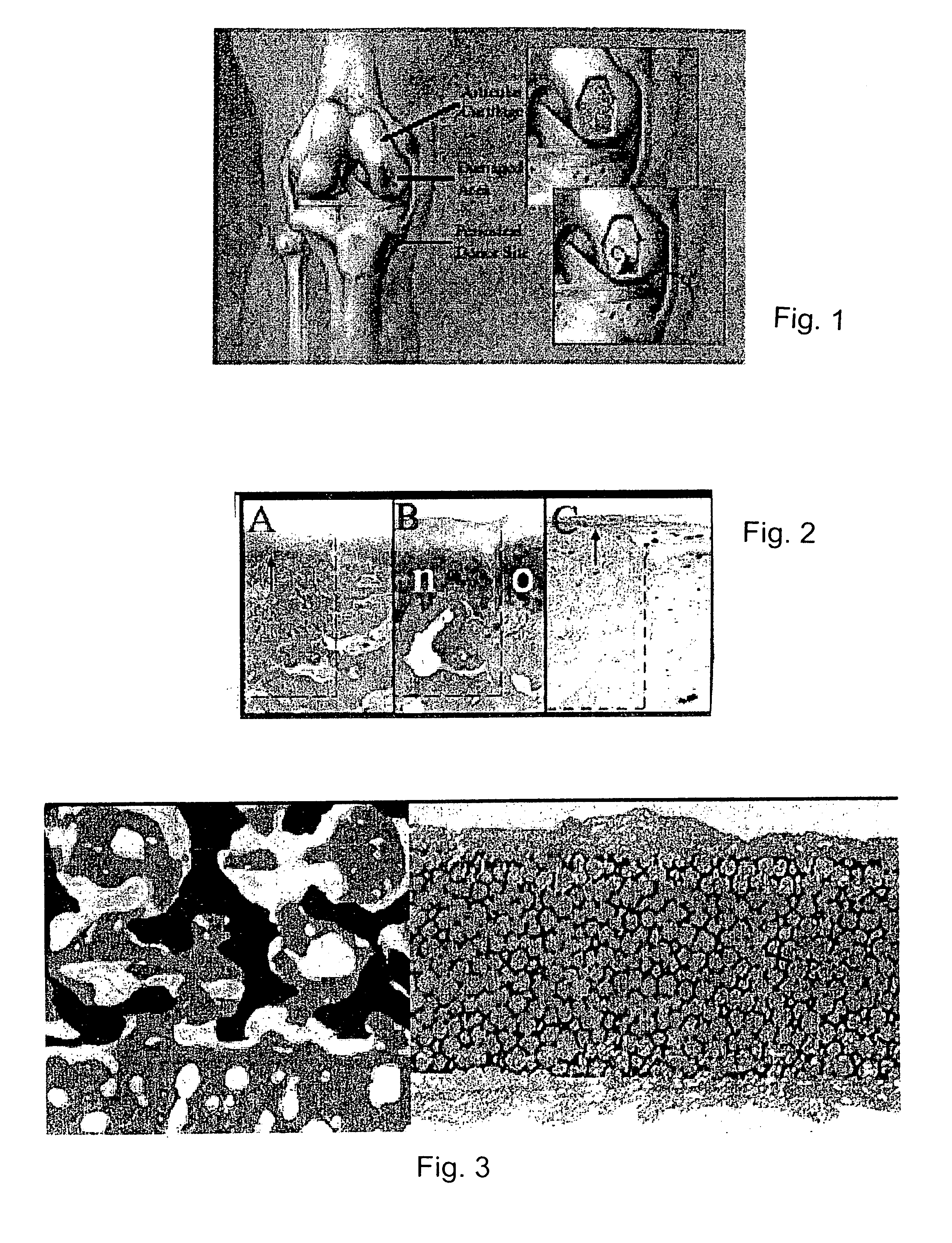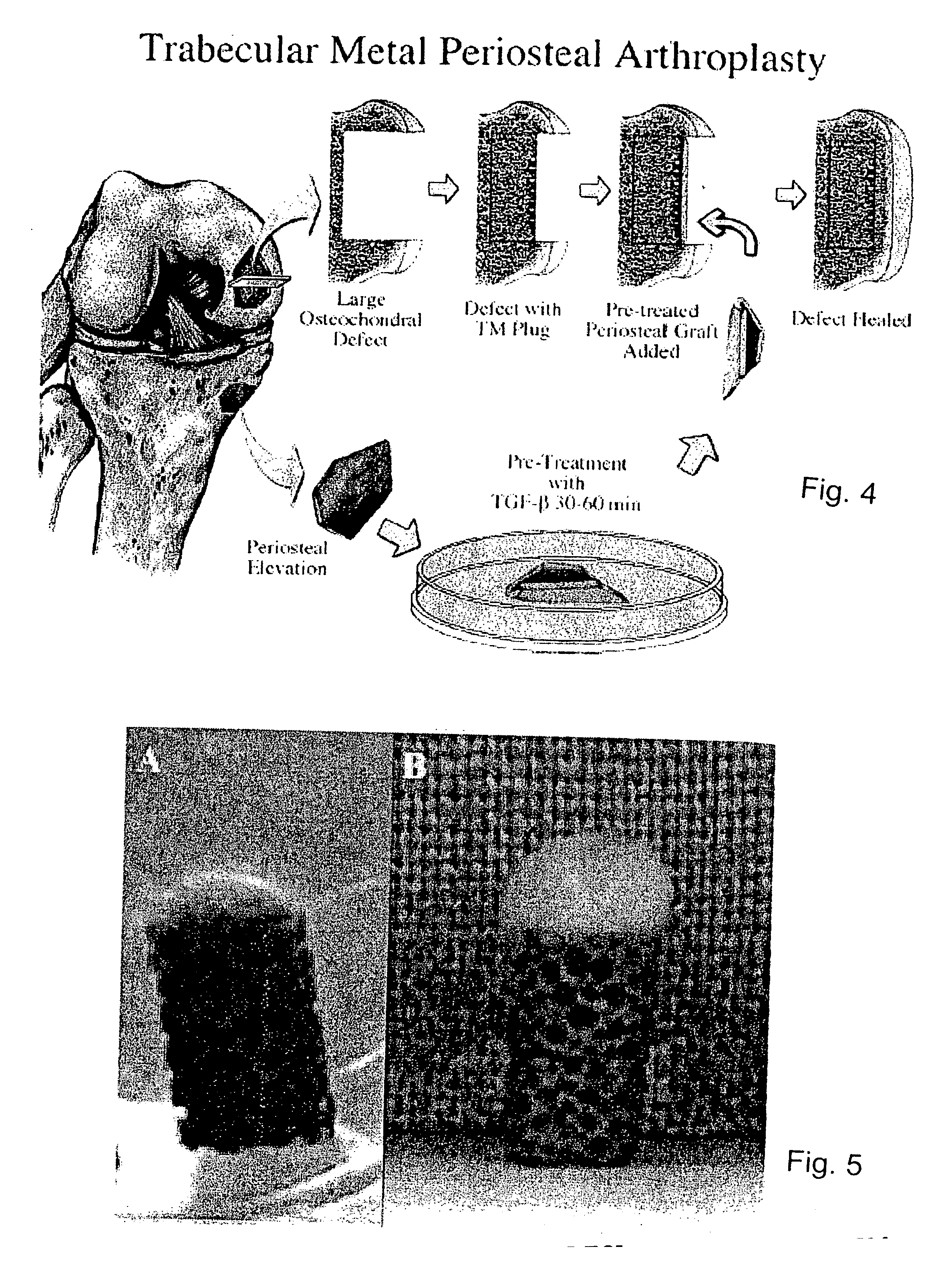Biosynthetic composite for osteochondral defect repair
a biosynthetic composite and osteochondral technology, applied in the field of biosynthetic composite for osteochondral defect repair, can solve the problems of limited healing ability, premature arthritis, frequent problem of damaged cartilage in our population, etc., and achieve the effect of enhancing the healing of large osteochondral defects
- Summary
- Abstract
- Description
- Claims
- Application Information
AI Technical Summary
Benefits of technology
Problems solved by technology
Method used
Image
Examples
examples
[0050] The following Examples have been presented in order to further illustrate the invention and are not intended to limit the invention in any way.
1. Periosteal Harvesting
[0051] Using a dermal punch 3.5-mm in diameter and sharp subperiosteal elevation, explants of periosteum are harvested from the medial proximal tibiae from two-month-old New Zealand white rabbits. Immediately after surgical harvesting, the periosteal explants are placed in Dulbecco's Modified Eagle Media (DMEM), with penicillin / streptomycin and 1 mM proline at 4° C. for no more than 1.5 hours prior to placement into the defect or into culture wells.
2. Histology
[0052] Samples are embedded in methyl methacrylate and sectioned using an Exakt™ System and stained with safranin O / fast green.
3. Histological Analysis
[0053] A standardized cartilage yield assay was performed after six weeks of culture (see O'Driscoll et al., “A method for automated cartilage histomorphometry.”Tissue Eng. 5:13-23...
PUM
| Property | Measurement | Unit |
|---|---|---|
| diameter | aaaaa | aaaaa |
| elastic modulus | aaaaa | aaaaa |
| elastic modulus | aaaaa | aaaaa |
Abstract
Description
Claims
Application Information
 Login to View More
Login to View More - R&D
- Intellectual Property
- Life Sciences
- Materials
- Tech Scout
- Unparalleled Data Quality
- Higher Quality Content
- 60% Fewer Hallucinations
Browse by: Latest US Patents, China's latest patents, Technical Efficacy Thesaurus, Application Domain, Technology Topic, Popular Technical Reports.
© 2025 PatSnap. All rights reserved.Legal|Privacy policy|Modern Slavery Act Transparency Statement|Sitemap|About US| Contact US: help@patsnap.com



